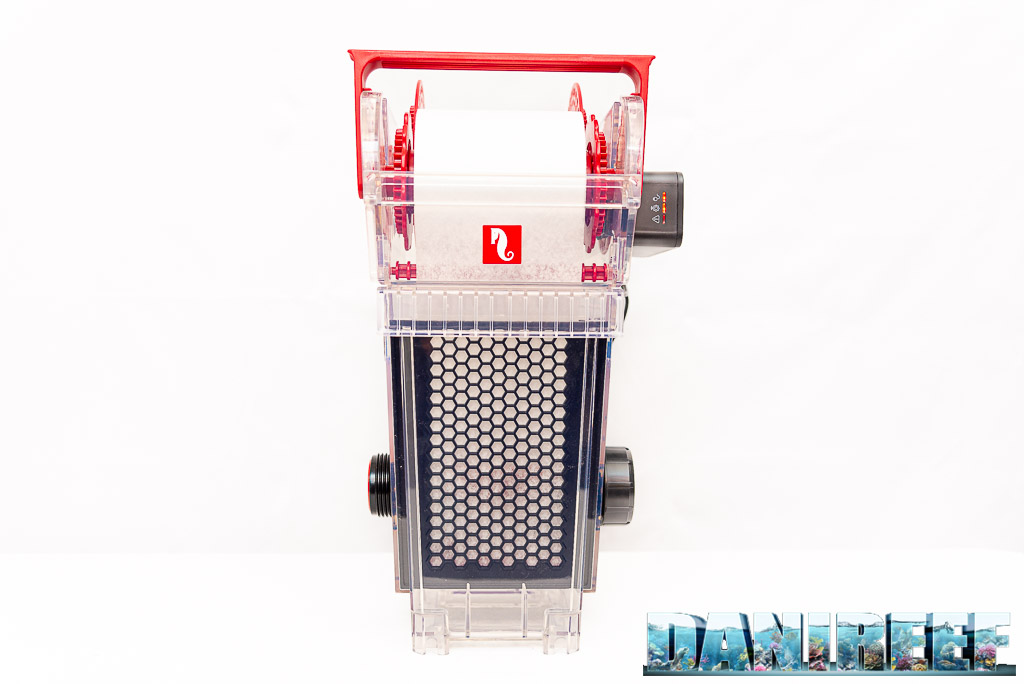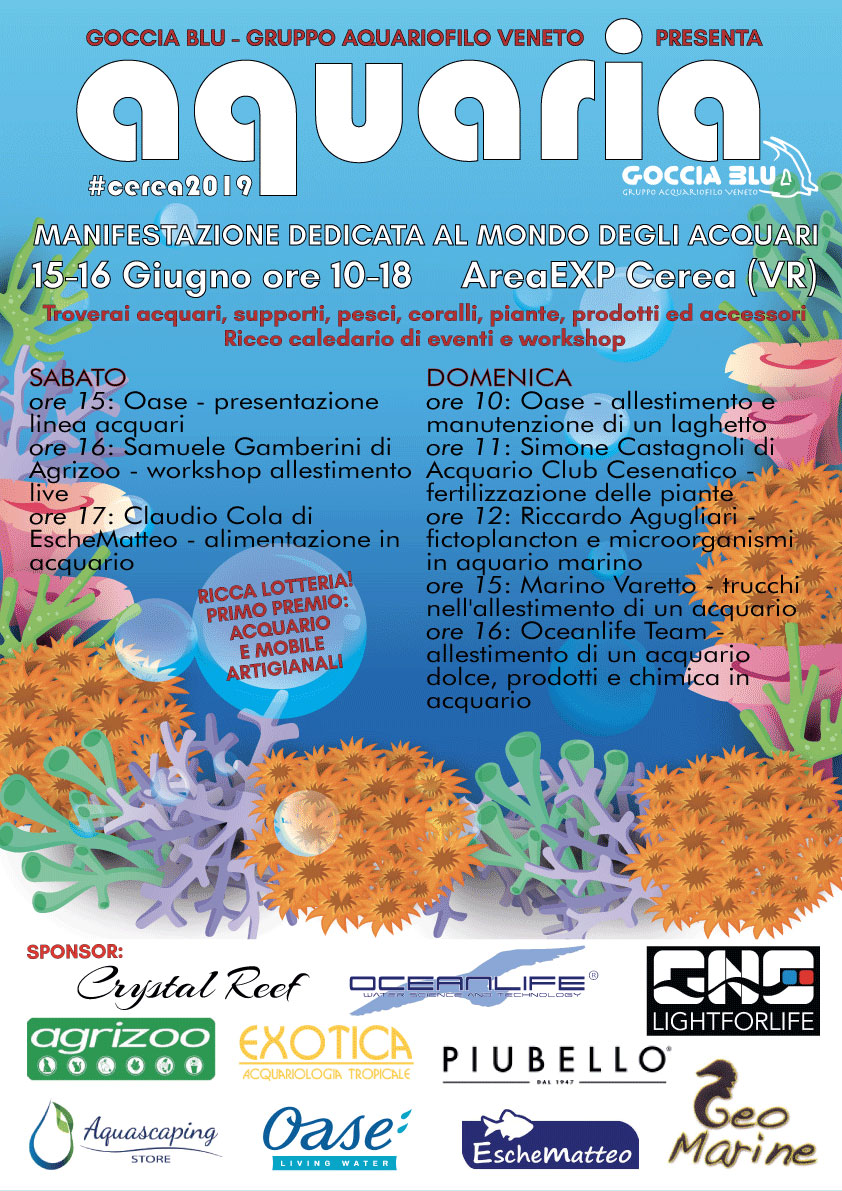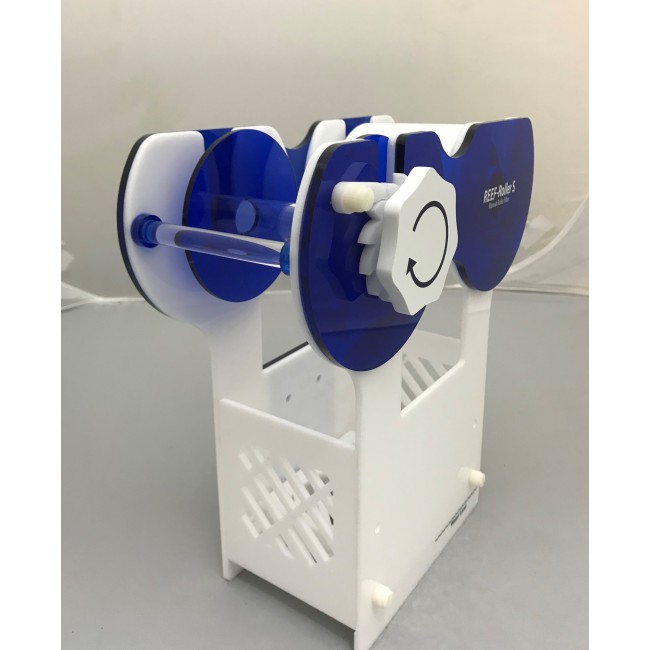
We have tested the manual filter Reef Roller by TMC for a long time now: we waited to finish our roll, and now we’re ready to tell you our experience, its pros and cons.
This article is also available: italiano
The roller filter is a filter for sediments that has to be placed right below the water fall in the aquarium. So the water coming from the tank has to go through a roll of filter material that blocks impurities and suspended loads.
On the other hand the filter’s functioning is extremely simple. It promises an egregious cleaning of aquarium water, and the maintenance should be minimal, since a roll is supposed to last for three months before having to be replaced.
Assembling Reef Roller by TMC
Assembling it is extremely easy and fast, unfortunately it’s rather bulky so you have to have the necessary space in sump, since the base, from which the water will fall, has to be above the water line, for obvious reasons. On the front of the device there is a blue line: that’s the level of water where to install it on.

In the rear there’s the guide. It has to be connected to the sump and allows to adjust the height of the filter, which will remain suspended.

The return pipe has to be inserted between the two rolls as you can see from the picture above. So the water goes through the filter grid and returns to the sump. But, gradually, the filter will clogs up and the water will be evacuated by extra holes as in the picture below.

Now you have to turn the superior part of the roll, that collects the dirt, and place the clean part under the grid.
The functioning of the TMC Reef Roller is all here.

How long does the filter last? For me, it lasted very long. The roll finished after 6 months of use against the three declared by TMC.
Any result?

The water is extremely clean, and without the uncomfortable socks that have to be cleaned and replaced in aquarium. From this point of view the result is amazing.
Sure, I missed the automatic version that would have done everything on its own, but given the cost I preferred the manual one.
The review continues on page two with cons, prices and our conclusions.











